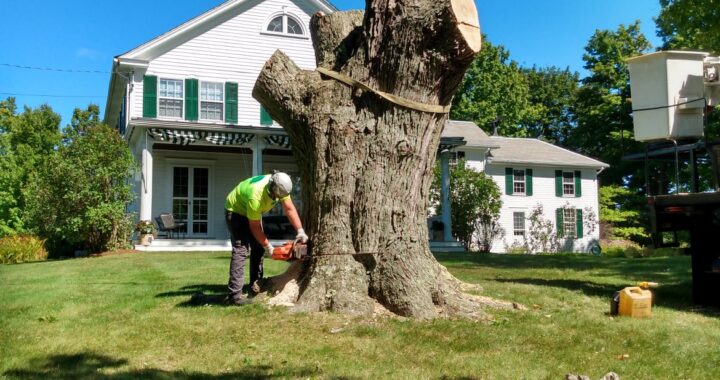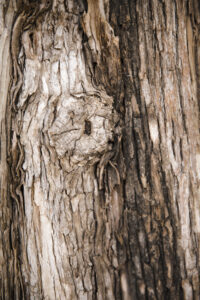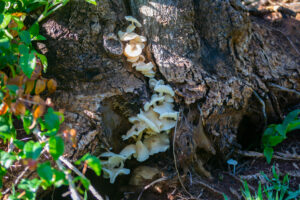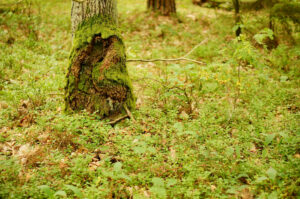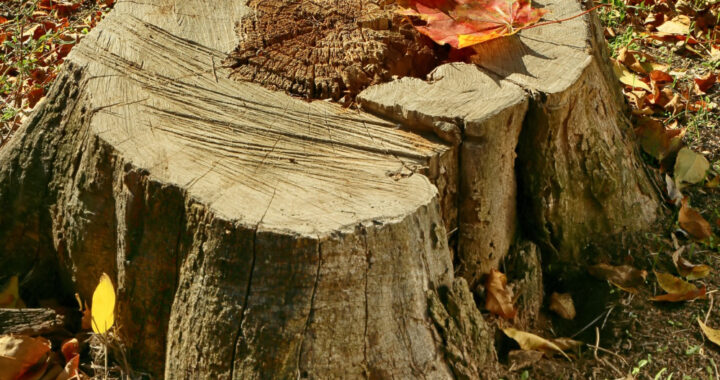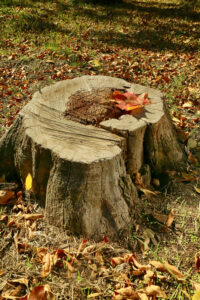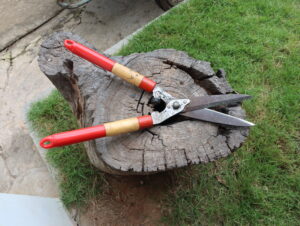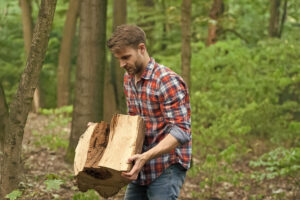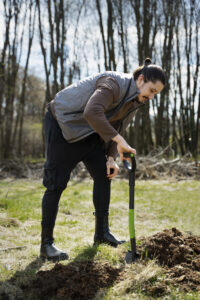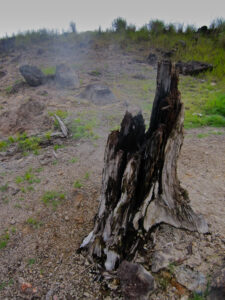One day, your tree looks full of life, green, strong, and healthy. Next, something feels off. No leaves, brittle branches… and you start wondering, is my tree dead?
Spotting the signs early matters. A dead or dying tree isn’t just an eyesore; it can become a safety hazard, attract pests, and even lower property value.
In this guide, we’ll show you how to tell if a tree is dead, what signs to look for, and when to call in the pros at Chris Lane Enterprises.
Telltale Signs Your Tree May Need Help
Trees can be surprisingly resilient, but they also have ways of showing when something’s not right. You might notice changes in the leaves, bark, or branches, subtle shifts often signal stress, disease, or decline. Knowing what to look for can help you catch issues early and give your tree the care it needs.
Here are some common signs of a dead or dying tree:
No Leaves or Delayed Leaf-Out
Key sign to look out for:
Your tree is bare or patchy well into spring, while other trees around it have already leafed out.
Why this happens:
- Species-specific dormancy periods
- Late frosts
- Root stress
- Internal decay.
It is important to note that trees like White Oaks, Hickory, and Black Walnut typically leaf out late, and it shouldn’t be a sign of alarm. If you have a tree taking its time to leaf out, you can ask us, and we’ll let you know if it’s normal.
Brittle or Cracking Branches
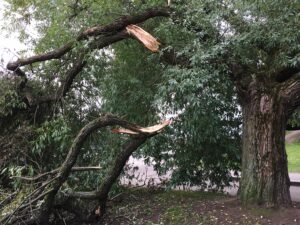
Key sign to look out for:
Branches snap easily and feel dry, with no green layer or moisture inside. Healthy trees have flexible, moist branches.
Why this happens:
- Lack of water/nutrients reaching limbs,
- Internal disease
- Structural decline.
If you’re unsure, you should do the snap test. Gently bend a small twig or branch. If it snaps easily and is dry and brittle inside, it’s likely dead. If it bends and feels flexible or shows green inside when broken, it’s still alive.
It’s a handy trick for spotting dead branches, especially in early spring when it’s hard to tell by appearance alone.
Peeling or Missing Bark
Key sign to look out for:
Large sections of bark are falling off in chunks or peeling without signs of new bark forming underneath. Bark protects the tree’s vital transport systems, and its loss could mean it is no longer circulating nutrients.
Why this happens:
- Fungal infections
- Sunscald
- Frost damage
- Internal rot
Fungus or Mushrooms at the Base
Key sign to look out for:
Mushrooms or fungal growth appear at the trunk’s base or along the roots.
Why this happens:
- Fungi thrive on decaying organic material. It could indicate rot in the roots or lower trunk if they’re present.
Internal decay risks the tree’s stability, so a professional inspection is essential.
Large Dead Limbs or Entire Sections Bare
Key sign to look out for:
The top of the tree (crown) or large limbs have no leaves or appear dry and lifeless even in peak season.
Why this happens:
- Disease, pests, or root issues can prevent nutrients from reaching the upper limbs.
Even if only parts of the tree look dead, it can be an early sign of widespread decline and should be checked by a tree care professional.
How to Tell If a Tree Is Dead vs Dormant
It’s a common question, especially in colder regions like New Hampshire or Vermont: Is my tree dead, or just dormant?
Trees go through seasonal changes, and many species lose their leaves or slow their growth in fall and winter. But when spring rolls around and your tree still looks lifeless, it can be hard to tell whether it’s simply “sleeping” or not coming back.
Here’s how to spot the difference before making any drastic decisions:
Understanding Dormancy vs Death
Dormancy is a natural process, similar to hibernation. It helps trees survive cold winters or dry seasons by conserving energy. During dormancy, it’s normal for trees to have no leaves, look bare, or even drop small twigs.
But a dead tree won’t bounce back. It will continue to decline no matter the weather or time of year.
If you’re unsure, the following quick tests can help you figure out what’s going on.
6 At-Home Tests You Can Try
|
Check |
Dormant Tree | Dead Tree |
| Scratch Test | Green layer beneath bark |
Brown, dry, brittle wood |
|
Snap Test |
Twig bends or is flexible before breaking | Twig snaps cleanly, no resistance |
| Buds on Branches |
Small buds may be visible, even if not yet open |
No buds, or dry/shriveled ones |
|
Leaf Behavior |
Leaves drop as expected in fall | May retain dead, brown leaves through winter |
|
Fungal Growth at Base |
Uncommon during dormancy |
Common—often indicates internal rot or root damage |
| Bark Condition | Bark intact, may flake slightly |
Bark peeling in large chunks, exposing dry wood |
| Woodpecker Activity | Minimal or none |
Often increased—woodpeckers target insect-infested dead wood |
What to Do Next
- Still unsure? If it’s early spring, wait a few weeks and retest.
- Seeing multiple red flags? It’s best to have a certified tree expert take a closer look.
Chris Lane Enterprises offers professional arborist services in Southern NH. Don’t wait—call us today!
Can You Save a Dying Tree?
Early Warning Signs You Can Still Act On:
- Sparse leaves, but some new growth is still visible: The tree may be weak, but it is not dead. Watch for buds or small green shoots.
- Only a few dead branches, not widespread: Localized dieback could be due to pests or weather damage.
- Green layer under bark in most areas (scratch test): This is a good sign the tree is still alive and responsive.
- Cracks in soil or signs of drought stress near roots: Correcting irrigation early can help the tree recover.
💡 Expert Tip: Don’t wait until summer to address spring symptoms; trees need energy early in the season to bounce back.
When It’s Time to Act—Trust the Tree Experts
If your tree is showing severe signs of decline or is already dead, it’s essential to act quickly. The risks, from falling limbs to pest infestations and potential property damage, only grow over time.
Whether your tree needs professional pruning, a health assessment, or safe removal, Chris Lane Enterprises is here to help. Our certified arborists serve Southern NH with trusted care, expert advice, and the right tools for the job.
📅 Request a free estimate today and get peace of mind from local professionals.
FAQs
How do you tell if a tree is fully dead?
A dead tree won’t have live buds, green under the bark, or flexible twigs. It may also show signs like peeling bark, brittle branches, or no leaf growth during the growing season.
Can a tree look dead but still be alive?
Yes! Some trees, especially those that leaf out late, may appear lifeless early in the season. Dormant trees can look dead, so it’s best to do a scratch or snap test to check for signs of life.
What happens if you don’t cut down a dead tree?
Over time, a dead tree becomes unstable and more likely to fall, especially during storms. It can also attract pests or disease, which may spread to healthy trees nearby.
What is the scratch test for trees?
The scratch test helps determine if a tree is alive. Lightly scratch a small section of bark on a twig with your fingernail or a knife. The tree is still alive if the layer underneath is green and moist. If it’s brown and dry, that part may be dead.
How much does it cost to remove a dead tree in NH?
Tree removal costs depend on the tree’s size, location, and condition. Large dead trees or trees near structures may cost more due to safety concerns. The best way to get an accurate estimate is with an on-site evaluation.
Is it bad to leave a dead tree?
Yes, leaving a dead tree can be risky. It may fall unexpectedly, cause property damage, or create safety hazards. Plus, it can attract wood-boring insects and spread decay to other trees.
What are the symptoms of a dead tree?
Common signs include no leaf growth, dry or brittle branches, peeling bark, fungus growth on the trunk, and no green tissue under the bark when scratched. If you notice several of these, your tree may die or severely decline.

